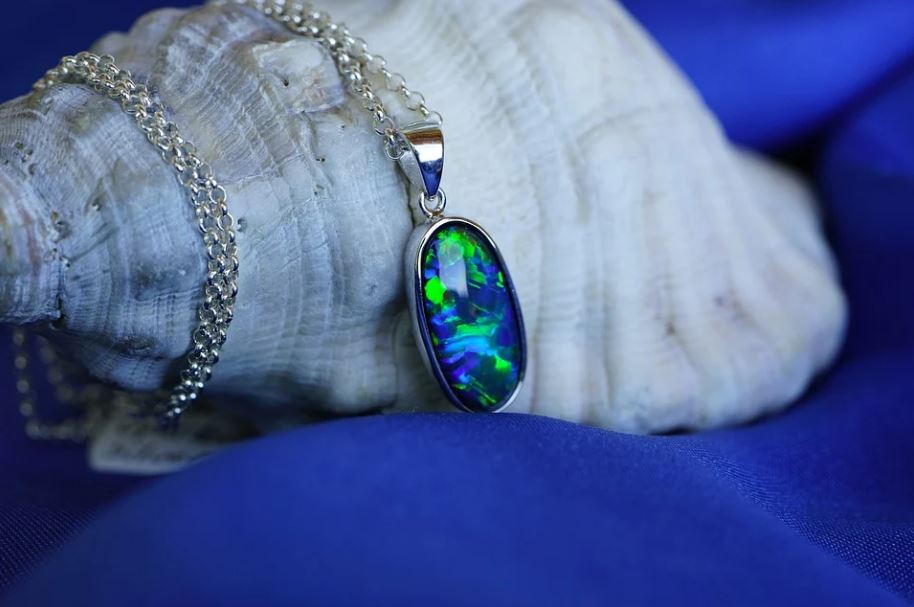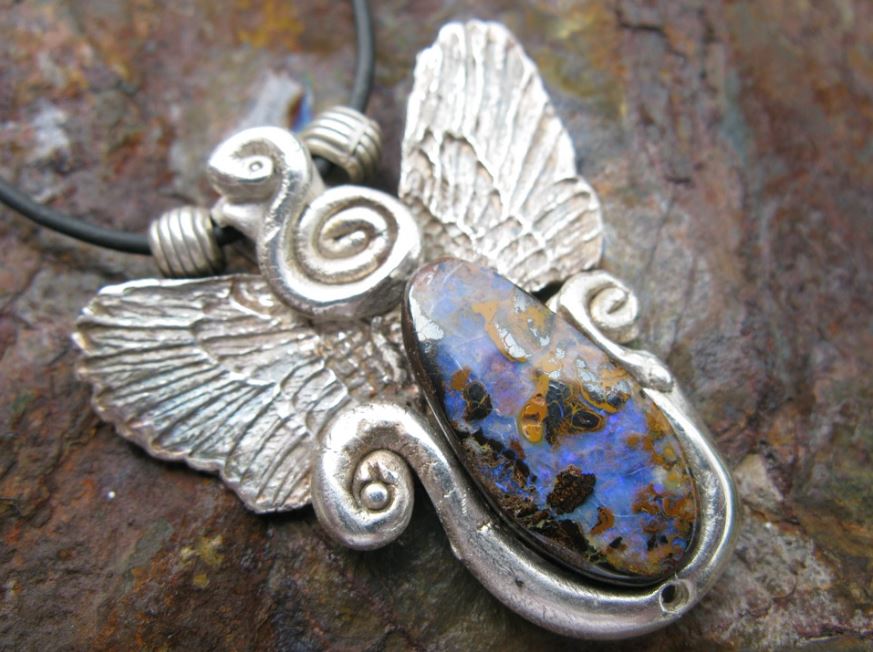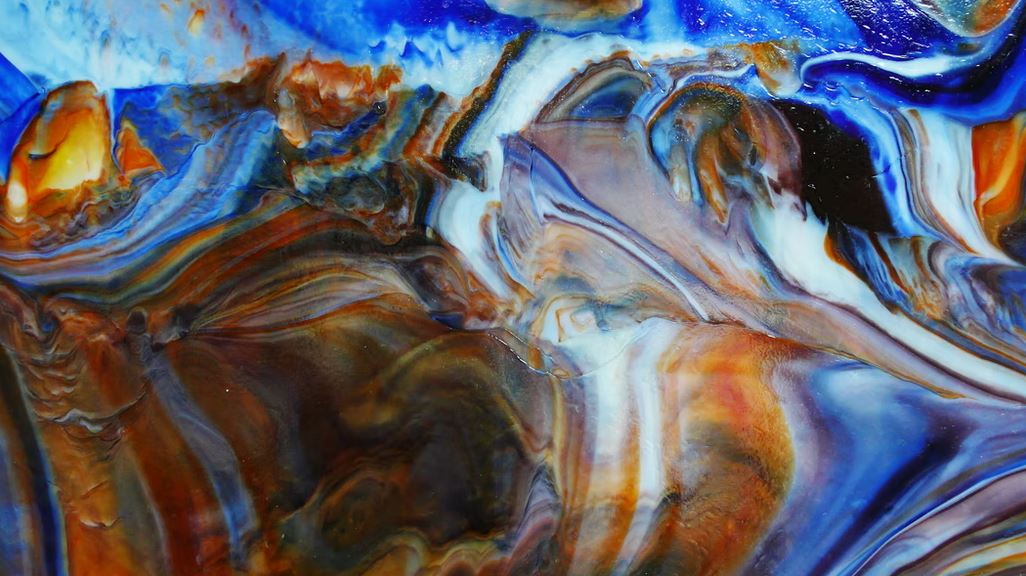There are dozens of different gemstones that are used for making all kinds of jewelry, but only a few are as mesmerizing and colorful as the Koroit opal, a special kind of opal that features various colors and patterns. Koroit opal is considered one of the most in-demand stones for jewelry today mainly because of its colors, but in the past, this stone was not regarded as a rare and highly valuable item. What is Koroit opal? And where is it discovered? We will know the detailed answers to these questions as we take a look at some pieces of information about the amazing Koroit opal.
Koroit Opal
Koroit Opal is a precious gemstone that is particularly known for its striking patterns and colors inside. Most of the colors of the Koroit opal can be seen from its exterior, although most jewelers cut the gemstone in half to further reveal its gorgeous streaks and patterns.
The Koroit opal is often cut using the cabochon method, wherein gemstones are cut with a convex and rounded surface that is polished to make the colors of the stones clearer. Throughout the years, Koroit opal has remained relatively affordable because of its abundance on the market, although it is highly sought after because of its unique appearance. Also, the gemstone is one of the most versatile, as it can be used for a variety of jewelry, including rings, pendants, bracelets, and earrings.
This gemstone is quite rough and difficult to cut, which is why only experienced cutters and jewelers are given the task to cut the precious Koroit opal in order to not waste each stone. Because of the varying streaks and patterns contained within the Koroit opal, most cutters would often get challenged in where to cut the stone since they have to decide which pattern to follow. Moreover, cutting the Koroit opal incorrectly would lead to the stone having its colors and patterns decreased in prominence or clarity, so it is crucial that cutters would know what to do to make the stone look better.
In order to make the Koroit opal more valuable, the miners would already cut each rough stone in half so that buyers could already see the colors inside the stones. Most buyers would buy matching splits so that they can use the entire stone to make earrings since it would look more appealing if each earring had matching colors and patterns. But, there are also Koroit opal stones that have little to no patterns or colors, and these ones are obviously less valuable in the market.
Where Does Koroit Opal Come From?
Koroit opal comes from the Koroit opal field that was set up in the Shire of Paroo, an area that is located in the southwest portion of Queensland, Australia. While the Shire of Paroo is mainly reliant on its grazing industry because of its wide fields that are suitable for raising cattle, the area is also the location for several opal fields.
The Koroit opal field is not considered a town despite its size, as it doesn’t have running water or electricity. However, miners get power sources from nearby towns like Yowah, which also has opal fields. As its name already suggests, the Koroit opal field is popular for being the place where the precious Koroit opal is mined. Due to the popularity of Koroit opal stones, they also serve as souvenirs in the nearby towns within the Shire of Paroo.
It is important to note that the Koroit opal field is larger than most mining fields in Australia, and because of its size, it is divided into various smaller mining fields, including the Red Star, Fiery Comet, Holloways, and Scotsman mines.
Who Discovered the Koroit Opal?
The mining field where the Koroit opal is located was discovered in 1897 by Lawrence Rostron, a manager of a nearby property called in Tilboroo station in Eulo. Before the discovery of the gemstone, Rostron assembled a group of eight miners that eventually grew in numbers until Rostron was able to create the Scottish & Australian Opal Mines, which operated in various mines located in Australia.
The Koroit opal field was first prospected using shafts, drills, and tunnels. By 1902, they were able to mine the first Koroit opal. In 1904, the Koroit opal field became bigger, and it had 150 shafts that were 5 to 15 meters deep. Included in those shafts are six water shafts that can carry up to 80,000 liters of water. The chief engineer of the business then created an underground pneumatic digging machine to make it much easier to mine stones. Because of the low prices of opal during the 1900s, mainly due to its abundance in the market, the Koroit opal field closed operations for years starting in 1906. Only a caretaker was present to monitor and keep the Koroit opal field safe from illegal miners.
After World War II, prices for opal began increasing once again, which led the property owners of the Koroit opal field to open it once again to sell more precious Koroit opal stones. By 1972, the Koroit opal field rose into prominence as one of the leading mining fields for opal stones. As of 2021, the Koroit opal field is one of the most mined areas in the world due to its massive size and its abundance of gemstones. Because of the sheer number of Koroit opal stones produced each year, the gemstone remains relatively affordable for many jewelers and jewelry enthusiasts in different countries around the world.
If you see a Koroit opal stone in person, you will immediately be mesmerized by the sheer brilliance of its colors and patterns. While the Koroit opal is still inexpensive, it would be great if you could get some Koroit opal stones of pieces of jewelry that contain the said gemstone before it goes up in price once after it gets rare in the future. Be sure to purchase Koroit opal stones with amazing patterns so that they will pop out more once you wear them as jewelry.



